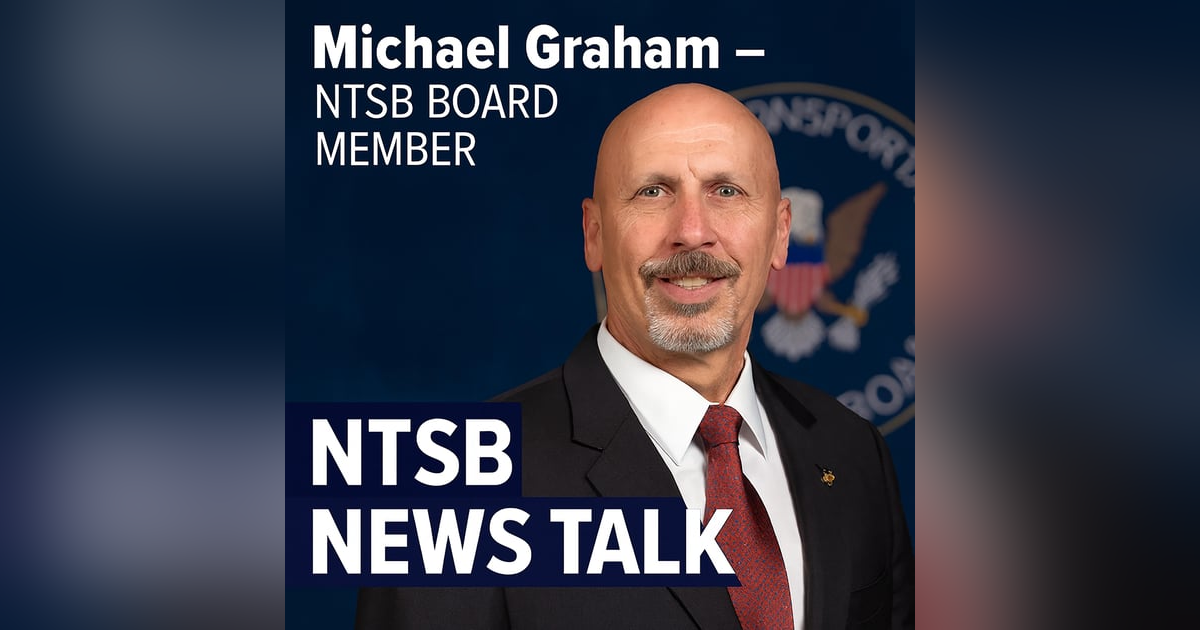NTSB Board Member Michael Graham on Safety Culture, SMS, and GA Risks

In this episode of NTSB News Talk, hosts Max Trescott and Rob Mark welcome Michael Graham, a current member of the National Transportation Safety Board (NTSB), for a deep discussion on the agency’s work and the broader state of aviation safety
Graham begins by clarifying the role of NTSB board members, often misunderstood as investigators. While trained in accident investigation, board members function more like the “Supreme Court of Transportation Safety,” deliberating on reports and voting on recommendations that flow from investigative teams. They also serve as media spokespeople at accident sites, coordinate with local authorities, and meet with victims’ families.
A major portion of the conversation focuses on advocacy—convincing regulators, manufacturers, operators, and associations to implement safety recommendations. Graham acknowledges that implementation can take years or even decades, citing the long struggle to mandate Positive Train Control in the rail sector. Despite delays, the board persists in pushing for life-saving changes.
The discussion then shifts to Safety Management Systems (SMS). Graham describes his advocacy for SMS across Part 135 operators, manufacturers, and repair stations, and highlights FAA Advisory Circular AC 120-92D, which now provides scalable SMS guidance for small operators and even single-pilot GA. This, he says, is a breakthrough that makes SMS practical outside of large organizations.
From his Navy background, Graham stresses the role of safety culture: open communication, willingness to accept critique, and rigorous debriefs after every mission. He encourages GA pilots to adapt these practices by critiquing their own flights, flying with peers who can offer feedback, and leveraging available flight data tools. Pilots, he argues, must move past ego and embrace constant improvement.
Graham also highlights spatial disorientation as a persistent and deadly problem. While only a fraction of GA accidents involve it, more than 90% are fatal. He recalls accidents such as the 2019 Amazon Air crash near Houston, underscoring the importance of proficiency in instrument flying. Pilots, he warns, must remain both current and truly proficient to avoid disaster.
The conversation touches on technology as an engineering control for safety. Graham sees promise in ADS-B In for situational awareness, particularly in congested or uncontrolled airspace, and advocates for broader adoption. He also points to angle of attack indicators as an underused but powerful tool for GA pilots to understand aircraft performance margins.
Additional topics include lessons from the NTSB’s General Aviation Dashboard, frustrations with slow NextGen implementation and ATC staffing, and the destruction of the TWA 800 reconstruction once displayed at the NTSB Training Center. Graham also describes his path to the board, from Textron safety leadership to a lengthy nomination and confirmation process, and the challenges of balancing safety priorities with limited agency staffing.
Throughout, Graham emphasizes that aviation safety is never static. A safe state is not permanent; it requires constant vigilance, adaptation, and recognition of new risks. For pilots and organizations alike, the lesson is clear: success comes from continuous critique, data-driven decision-making, and openness to feedback.
This wide-ranging interview provides both a candid look inside the NTSB and actionable lessons for GA pilots, safety professionals, and anyone passionate about preventing accidents.